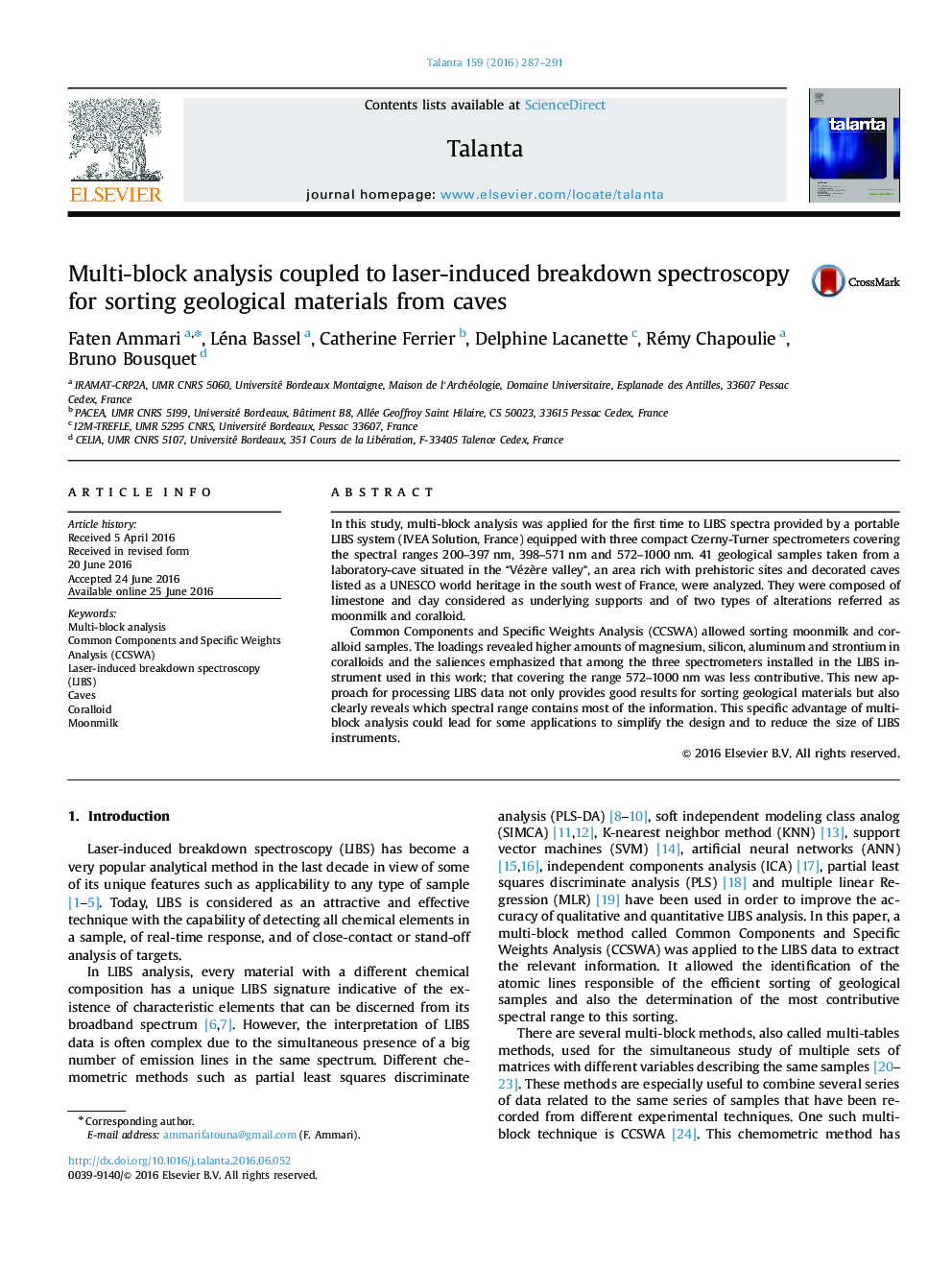| Article ID | Journal | Published Year | Pages | File Type |
|---|---|---|---|---|
| 1241777 | Talanta | 2016 | 5 Pages |
•A new approach for processing LIBS data by using multi-block analysis.•Characterization of two types of white alteration threatening many prehistoric caves.•Methodology to determine the most convenient LIBS instrument for a given application.
In this study, multi-block analysis was applied for the first time to LIBS spectra provided by a portable LIBS system (IVEA Solution, France) equipped with three compact Czerny-Turner spectrometers covering the spectral ranges 200–397 nm, 398–571 nm and 572–1000 nm. 41 geological samples taken from a laboratory-cave situated in the “Vézère valley”, an area rich with prehistoric sites and decorated caves listed as a UNESCO world heritage in the south west of France, were analyzed. They were composed of limestone and clay considered as underlying supports and of two types of alterations referred as moonmilk and coralloid.Common Components and Specific Weights Analysis (CCSWA) allowed sorting moonmilk and coralloid samples. The loadings revealed higher amounts of magnesium, silicon, aluminum and strontium in coralloids and the saliences emphasized that among the three spectrometers installed in the LIBS instrument used in this work; that covering the range 572–1000 nm was less contributive. This new approach for processing LIBS data not only provides good results for sorting geological materials but also clearly reveals which spectral range contains most of the information. This specific advantage of multi-block analysis could lead for some applications to simplify the design and to reduce the size of LIBS instruments.
Graphical abstractFigure optionsDownload full-size imageDownload as PowerPoint slide
